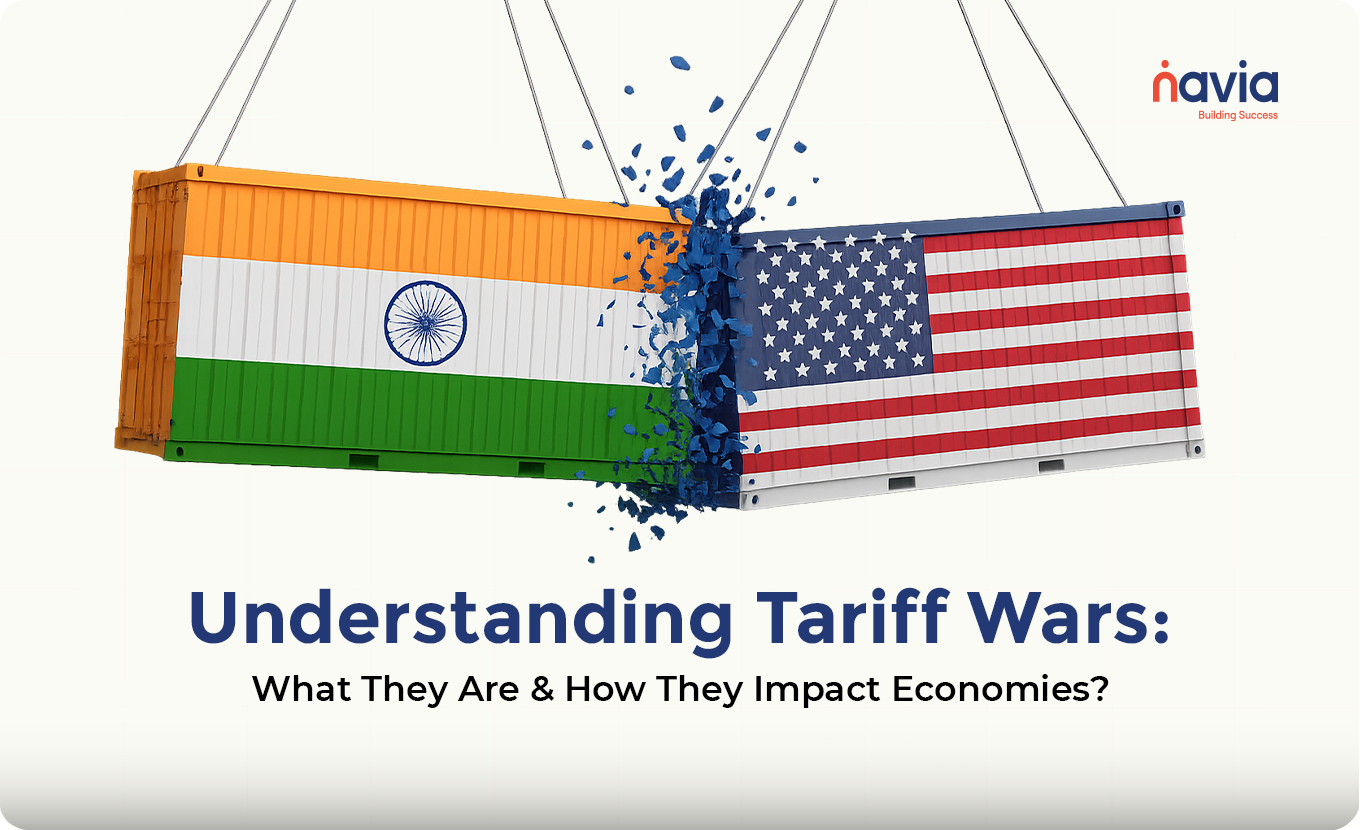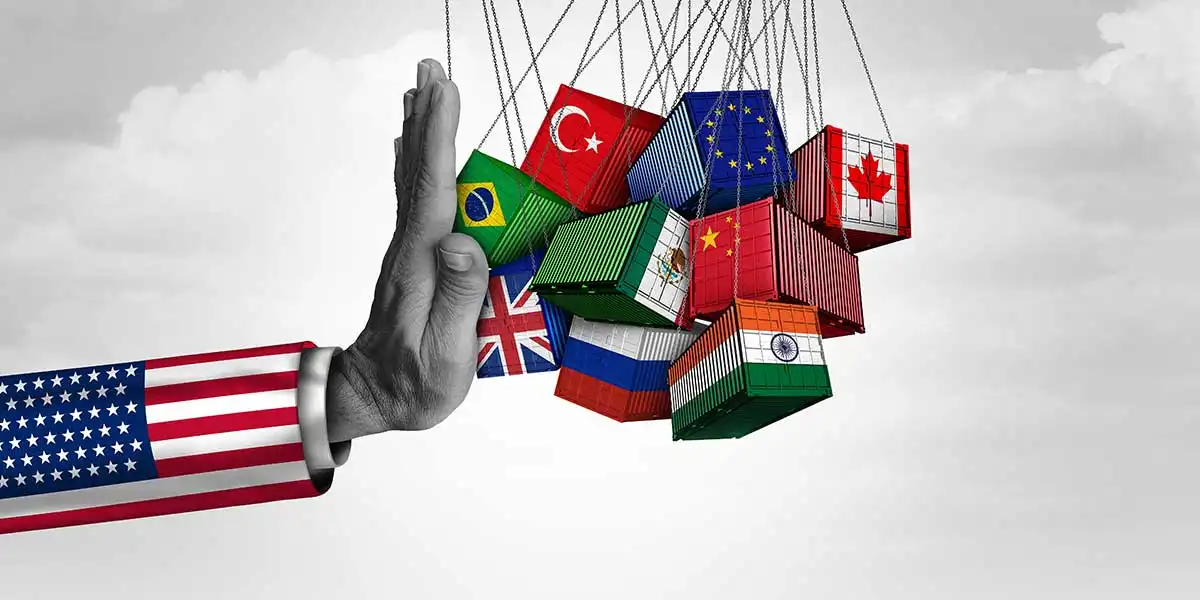India’s Trade Future Lies Beyond Washington’s Tariff Walls
The United States remains a massive consumer market, but it is also a mature economy where 2% annual growth is considered an achievement. Compare that to emerging economies—some growing at 5% or even approaching double digits—and the appeal of diversifying India’s trade portfolio becomes obvious. In today’s global economy, small can be mighty if growth is fast and markets are opening.
The current tariff war, triggered by Washington, is not the all-out protectionist spiral of the 1930s. Europe, ASEAN, and much of Africa and Latin America remain committed to low or zero tariffs. These blocs still embrace the spirit of free trade. That is where India’s future lies.
The U.S. Tariff Trap
President Trump’s new tariff wave may yet face legal challenges in U.S. courts. But even if they stand, they will raise U.S. consumer prices, stoke inflation, and provoke political blowback—history’s constant companion to economic pain. In the meantime, India cannot wait for the American political cycle to resolve itself. Overdependence on Washington’s goodwill is a strategic liability.
The Case for a Global Pivot
India must use this moment to pivot—boldly.
-
Double Down on FTAs: Finalize the EU–India Free Trade Agreement, upgrade the ASEAN–India FTA, and expand into Africa’s AfCFTA and Latin America’s MERCOSUR.
-
Strengthen Domestic Demand: With a middle class expected to reach 600 million by 2030, India has the capacity to fuel growth from within.
-
Re-engage with China: Selective, security-conscious trade cooperation with China could shore up supply chains and reduce costs in key sectors.
-
Deepen Ties with Canada: A Comprehensive Economic Partnership Agreement could open high-income market access while sidestepping U.S. tariff exposure.
Security and Stability: The Pakistan Question
Trade thrives on stability. Yet Pakistan’s long-standing Ghazwa-e-Hind doctrine—an ideological commitment to the conquest of India—remains an existential threat, amplified by its nuclear arsenal and asymmetric warfare tactics. This is South Asia’s version of the Iran–Israel standoff, with one difference: Pakistan’s capacity to act on its ambitions is far greater.
If Washington can broker normalization talks between Iran and Israel, it should apply similar energy to India–Pakistan peace efforts. The dividends for regional security and trade could be enormous.
The Road Ahead
Tariff turbulence in the U.S. is not a passing nuisance—it is a signal. India’s trade strategy must be built for a multipolar economy, not one tethered to a single capital. By cultivating new markets, strengthening its domestic base, and confronting the security challenges that threaten regional commerce, India can turn global uncertainty into long-term opportunity.
For India, the choice is simple: adapt now, or be boxed in by someone else’s trade war.
अमेरिकी टैरिफ़ दीवारों के पार है भारत का व्यापारिक भविष्य
अमेरिका एक विशाल उपभोक्ता बाज़ार है, लेकिन यह एक परिपक्व अर्थव्यवस्था भी है जहाँ 2% वार्षिक विकास दर को भी बड़ी उपलब्धि माना जाता है। इसकी तुलना उन उभरती अर्थव्यवस्थाओं से करें जो 5% से अधिक या लगभग दो अंकों की वृद्धि दर हासिल कर रही हैं—तो भारत के लिए अपने व्यापारिक पोर्टफ़ोलियो में विविधता लाने का आकर्षण साफ़ नज़र आता है। आज की वैश्विक अर्थव्यवस्था में, छोटे बाज़ार भी ताक़तवर हो सकते हैं अगर उनकी वृद्धि तेज़ हो और बाज़ार खुल रहे हों।
वॉशिंगटन द्वारा शुरू किया गया मौजूदा टैरिफ़ युद्ध 1930 के दशक के सर्वव्यापी संरक्षणवाद जैसा नहीं है। यूरोप, आसियान, और अफ्रीका व लैटिन अमेरिका का अधिकांश हिस्सा अब भी कम या शून्य टैरिफ़ के पक्ष में है। ये व्यापारिक ब्लॉक अब भी मुक्त व्यापार की भावना को अपनाए हुए हैं। भारत का भविष्य इन्हीं में है।
अमेरिकी टैरिफ़ का जाल
राष्ट्रपति ट्रंप की नई टैरिफ़ लहर को अमेरिकी अदालतों में कानूनी चुनौती मिल सकती है। लेकिन अगर ये टैरिफ़ कायम भी रहते हैं, तो वे अमेरिकी उपभोक्ता कीमतें बढ़ाएँगे, महँगाई को भड़काएँगे और राजनीतिक प्रतिक्रिया को जन्म देंगे—जो आर्थिक पीड़ा की स्थायी साथी रही है। इस बीच, भारत अमेरिकी राजनीतिक चक्र के सुलझने का इंतज़ार नहीं कर सकता। वॉशिंगटन की मर्ज़ी पर अत्यधिक निर्भरता एक रणनीतिक जोखिम है।
वैश्विक मोड़ का तर्क
भारत को इस क्षण का साहसपूर्वक इस्तेमाल करना चाहिए—और दिशा बदलनी चाहिए।
-
एफ़टीए को तेज़ी से आगे बढ़ाना: यूरोपीय संघ–भारत मुक्त व्यापार समझौते को अंतिम रूप देना, आसियान–भारत एफटीए को उन्नत करना, और अफ्रीका के AfCFTA व लैटिन अमेरिका के MERCOSUR में विस्तार करना।
-
घरेलू मांग को मज़बूत करना: 2030 तक अनुमानित 60 करोड़ की मध्यवर्गीय आबादी के साथ भारत के पास भीतर से विकास को ईंधन देने की क्षमता है।
-
चीन से पुनः जुड़ना: सुरक्षा-समझौतों के साथ चुनिंदा व्यापारिक सहयोग से आपूर्ति श्रृंखलाओं को स्थिर किया जा सकता है और प्रमुख क्षेत्रों में लागत घटाई जा सकती है।
-
कनाडा से संबंध गहराना: एक व्यापक आर्थिक साझेदारी समझौता (CEPA) उच्च-आय वाले बाज़ार तक पहुँच खोल सकता है और अमेरिका के टैरिफ़ जोखिम को कम कर सकता है।
सुरक्षा और स्थिरता: पाकिस्तान का सवाल
व्यापार स्थिरता पर निर्भर करता है। लेकिन पाकिस्तान का पुराना ग़ज़वा-ए-हिंद सिद्धांत—भारत पर विजय का एक वैचारिक संकल्प—अब भी अस्तित्व के लिए ख़तरा बना हुआ है, जिसे उसके परमाणु हथियारों और असममित युद्धनीति (आतंकवाद) ने और ख़तरनाक बना दिया है। यह दक्षिण एशिया का ईरान–इज़राइल गतिरोध है, फर्क बस इतना कि पाकिस्तान की क्षमता अपने इरादों को अंजाम देने की कहीं ज़्यादा है।
अगर वॉशिंगटन ईरान और इज़राइल के बीच सामान्यीकरण वार्ता को प्रोत्साहित कर सकता है, तो उसे भारत–पाकिस्तान शांति प्रयासों में भी वही ऊर्जा लगानी चाहिए। इससे क्षेत्रीय सुरक्षा और व्यापार में अपार लाभ मिल सकते हैं।
आगे का रास्ता
अमेरिका में टैरिफ़ उथल-पुथल कोई क्षणिक परेशानी नहीं है—यह एक संकेत है। भारत की व्यापार रणनीति को बहुध्रुवीय अर्थव्यवस्था के लिए तैयार होना चाहिए, न कि किसी एक राजधानी से बँधी हुई। नए बाज़ारों को विकसित करके, घरेलू आधार को मज़बूत करके, और उन सुरक्षा चुनौतियों का सामना करके जो क्षेत्रीय वाणिज्य को खतरे में डालती हैं, भारत वैश्विक अनिश्चितता को दीर्घकालिक अवसर में बदल सकता है।
भारत के लिए चुनाव स्पष्ट है: अभी अनुकूलन करें, या फिर किसी और के व्यापार युद्ध में फँसकर रह जाएँ।




No comments:
Post a Comment